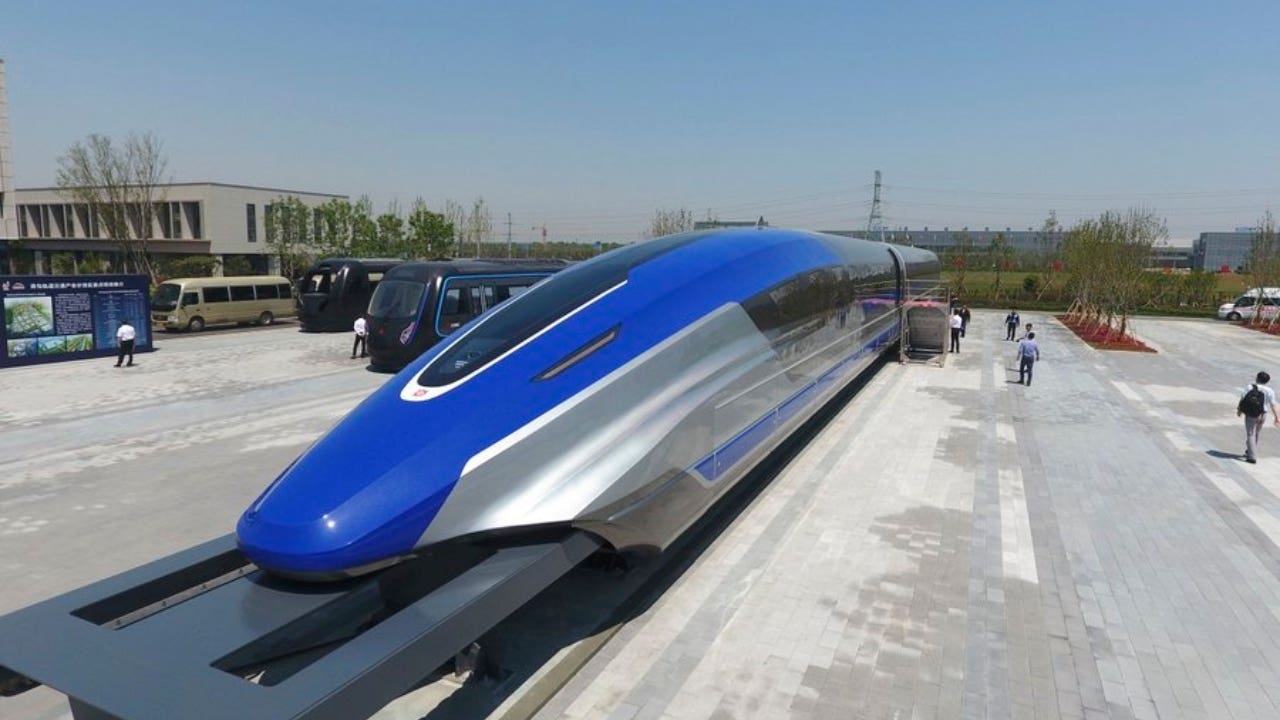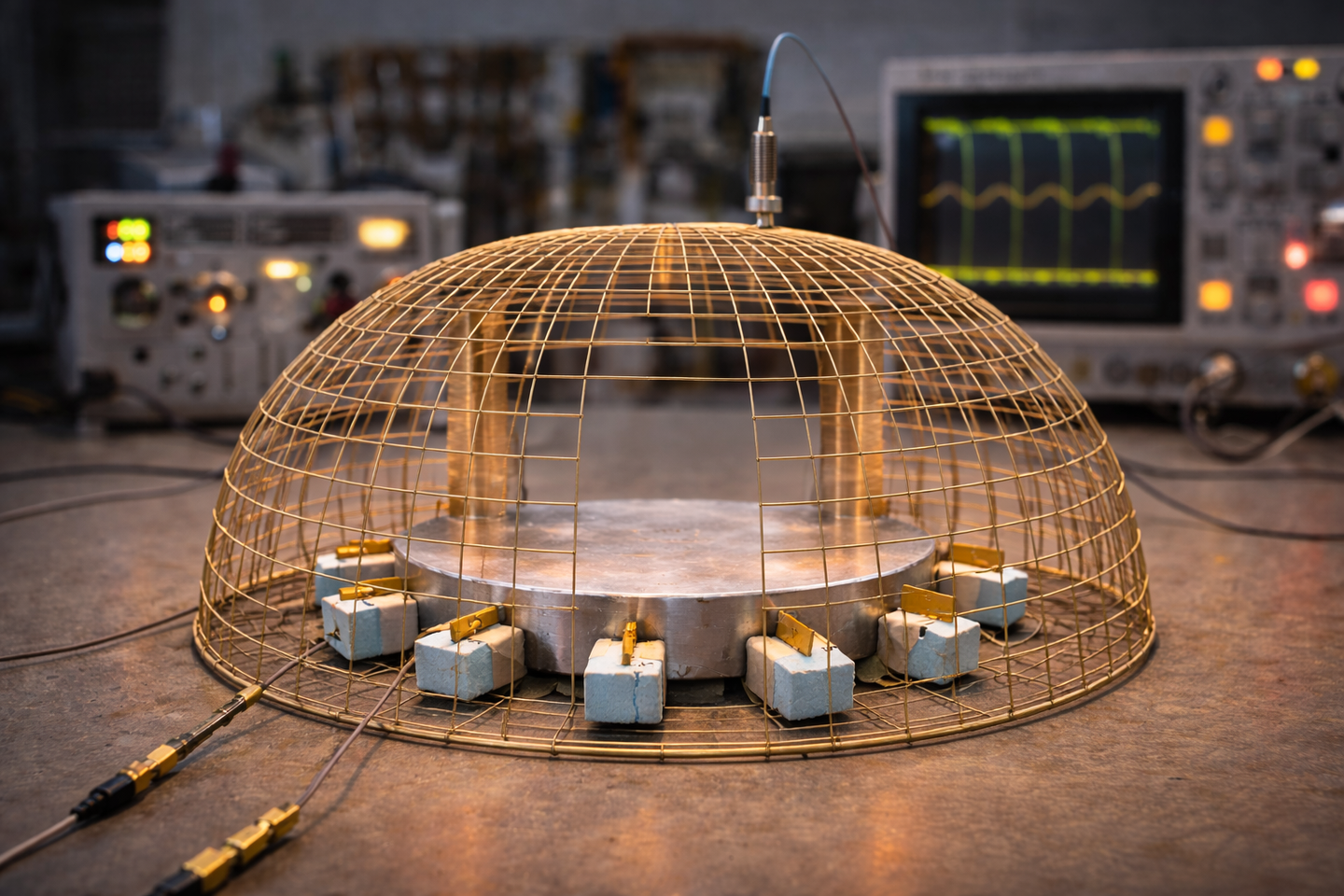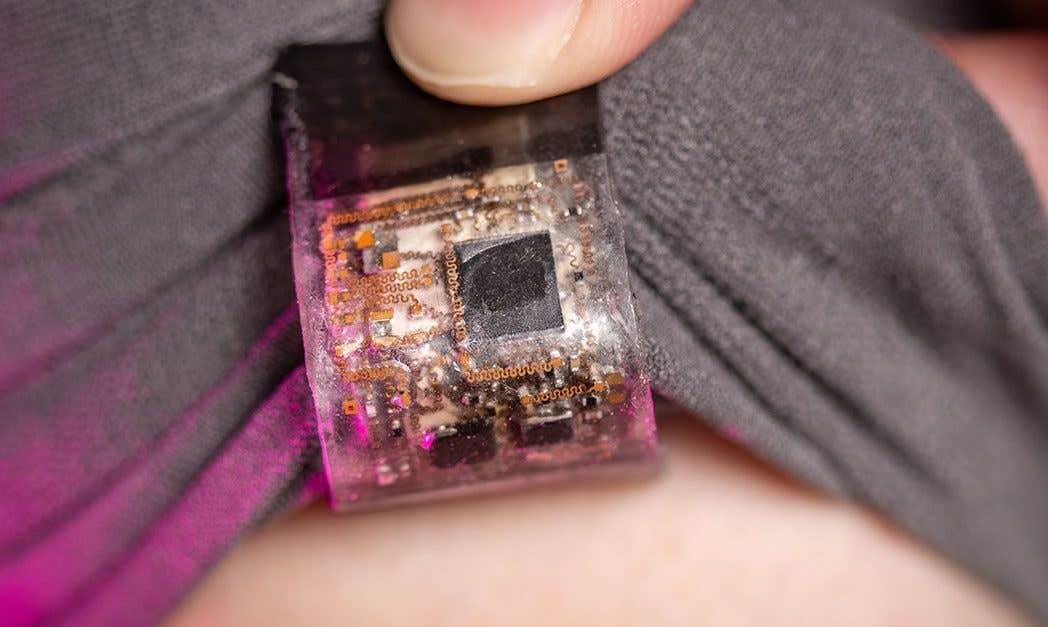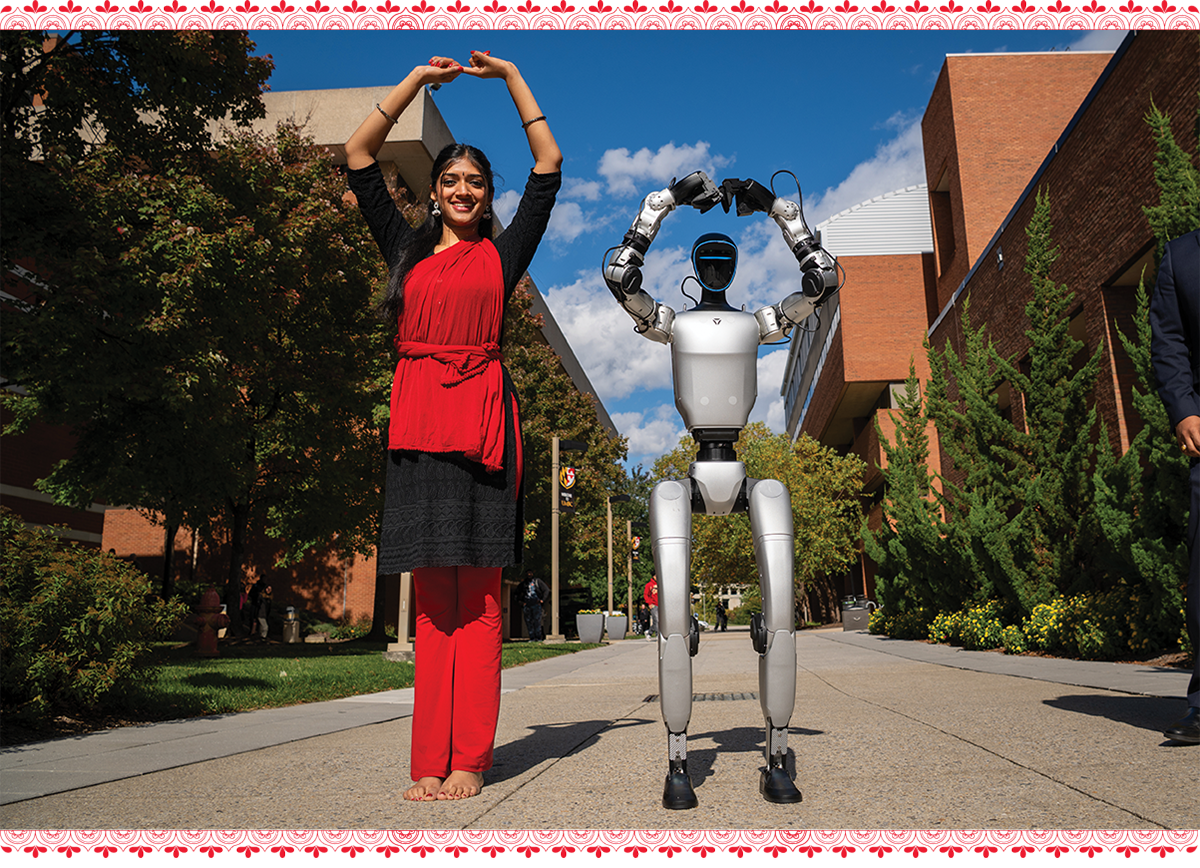China rolls out the world’s fastest maglev bullet train with a top speed of 600 km/h
China rolled out its new Maglev train at a ceremony in Qingdao on July 21, 2021. The train has an astonishing top speed of 600km/h.

[July 21, 2021: Josh Shavit]
The new maglev transportation system made its public debut in the coastal city of Qingdao, China's east Shandong province, state-run Xinhua news agency reported. Credit: DD News
China rolled out its new Maglev train at a ceremony in Qingdao on July 21, 2021. The train has an astonishing top speed of 600km/h. As things stand it's the world's fastest ground vehicle.
"Maglev" is an abbreviation of "magnetic levitation." The train appears to be "floating" thanks to an electromagnetic force that sends it gliding above the tracks.
Compared with traditional vehicles running on wheels, high-speed maglev trains do not have contact with rail tracks. They have advantages in terms of efficiency and speed, and produce very little noise, said He Yunfeng, who is with CRRC Zhuzhou Electric Corporation Limited.
This marks another crucial milestone in the country's rapid rise as a global leader in high-speed rail technology and manufacturing and in its broad, ambitious goals to accelerate urbanization and build a modern socialist power.
The maglev train fills the gap between their current high-speed train that runs at around 350 km/h and commercial airplanes with a speed of 800 km/h. This addition will round out China's comprehensive transportation network planned by 2035, analysts noted.
The maglev train can be configured from 2 to 10 cars, each capable of accommodating more than 100 passengers, to meet different needs.
A prototype of the new maglev train was revealed to media in 2019. That same year, China announced ambitious plans to create "3-hour transportation circles" between major metropolitan areas.
Delivering on this target, the maglev train improves national transportation infrastructure within the range of 1,500 kilometers, according to a report by the CRRC. Travel that would currently take a 10-hour high-speed train trip from South China's Shenzhen to Shanghai will be shortened to only 2.5 hours once a maglev train is built.
The new maglev train showcases a number of technological breakthroughs and advances, including a self-developed brake system that is 30 percent more efficient than the Shanghai maglev train. As such, braking distance is reduced from about 16 kilometers to 10 kilometers according to the CRRC Qingdao Sifang Rolling Stock Research Institute (CRRC SRI).
Rail network infrastructure in China
In 2020, the total length of China's railways was 146,300 kilometers, including 38,000 kilometers of high-speed railway, according to National Railway Administration data.
This already places China as having the largest network of high-speed railways in the world, covering 95 percent of cities with a population of more than a million people, according to the Ministry of Transport.
China aims to build another 200,000 kilometers of railways, 460,000 kilometers of highways, and 25,000 kilometers of high-level sea lanes by 2035, according to a 15-year transport expansion guideline published in February this year.
The network is designed to support the "National 123" transportation circle, which stands for one-hour commute within the city, two-hour trip between city clusters and three-hour travel to major cities nationwide, according to Lu Huapu, director of the Transportation Research Institute of Tsinghua University.
The maglev transportation system can greatly improve the quality and efficiency of transportation and change the characteristics of economic and geographical location and regional competitiveness, Lu said.
The system will also help consolidate China's leading position in high-speed rail technology and is of great significance to promote the development and upgrading of related industries.
For more technology stories check out our New Innovations section at The Brighter Side of News.
Like these kind of feel good stories? Get the Brighter Side of News' newsletter.
Tags: #New_Innovations, #Transportation, #Trains, #Maglev, #The_Brighter_Side_of_News



